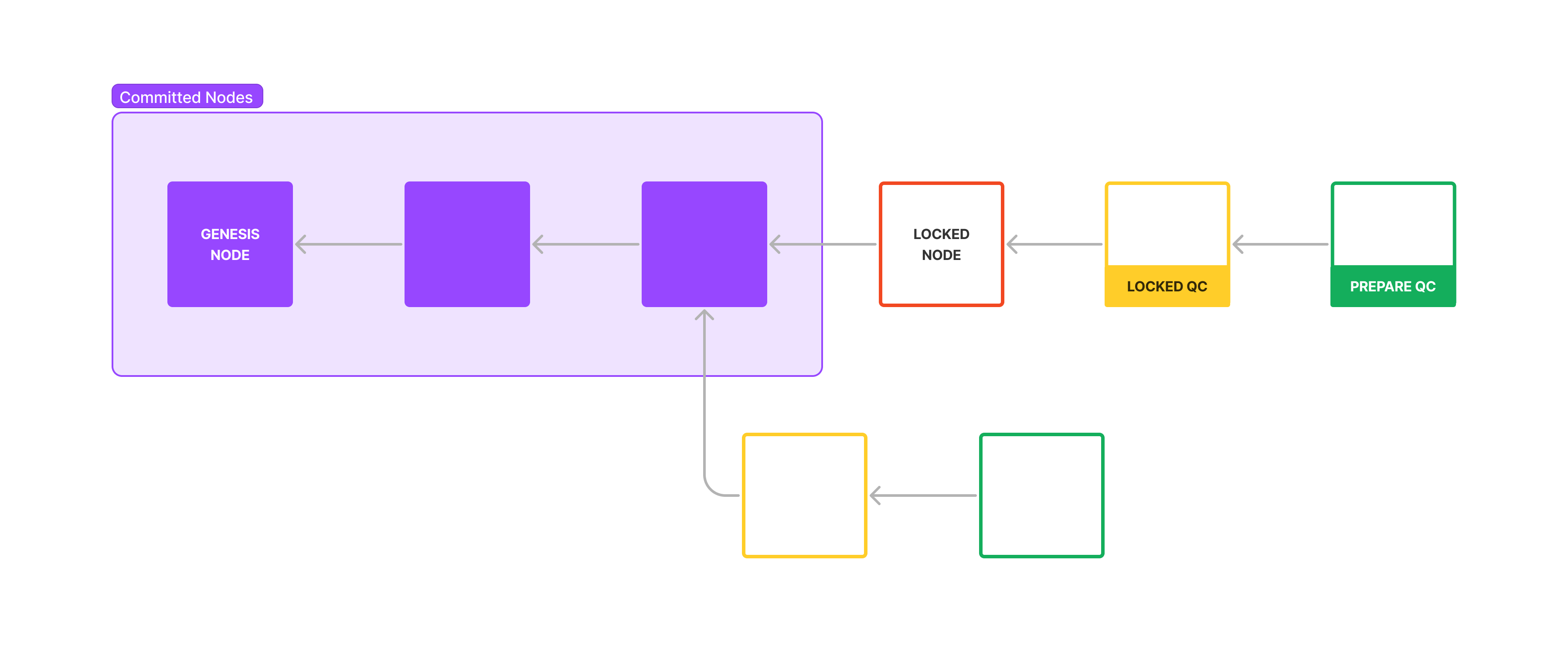Consensus Mechanism
A blockchain consensus mechanism is a protocol that enables multiple participants in a blockchain network to agree on the current state of the blockchain and validate transactions without a centralised authority. By doing so, consensus mechanisms ensure the security of the blockchain and validate the authenticity of transactions.
ParallelChain Mainnet uses a variant of consensus procotol called HotStuff to validate transactions on the network.
The HotStuff Consensus Protocol
HotStuff works by building a 'BlockTree': a directed acyclic graph of Blocks. Block is a structure with a data field which applications are free to populate with arbitrary byte-arrays. In consensus algorithm literature, we typically talk of consensus algorithms as maintaining state machines that change their internal states in response to commands, hence the choice of terminology.
HotStuff guarantees that committed Blocks are immutable. That is, they can never be un-committed as long as at least a supermajority of voting power faithfully executes the protocol. This guarantee enables applications to make hard-to-reverse actions with confidence.

A Block becomes committed the instant its third confirmation is written into the BlockTree. Confirmation for a Block A is another Block B such that there is a path between B to A.
The choice of third confirmation to define commitment--as opposed to first or second--is not arbitrary. HotStuff's safety and liveness properties hinge upon this condition. You can read this paper to learn more about it. To summarize:
- Classic BFT consensus algorithms such as PBFT require only 2 confirmations for commitment, but this comes at the cost of expensive leader-replacement flows.
- Tendermint requires only 2 confirmations for commitment and has a simple leader-replacement flow, but needs an explicit 'wait-for-N seconds' step to guarantee liveness.
HotStuff is the first consensus algorithm with a simple leader-replacement algorithm that does not have a 'wait-for-N seconds' step and thus can make progress as fast as network latency allows.
Hotstuff-rs
HotStuff-rs is a Rust Programming Language implementation of the HotStuff consensus protocol. It offers:
- Guaranteed Safety and Liveness in the face of up to 1/3rd of Voting Power being Byzantine at any given moment,
- A small API (
Executor) for plugging in state machine-based applications like blockchains, and - Well-documented, 'obviously correct' source code, designed for easy analysis and extension.
A Rust Programming Language library for Byzantine Fault Tolerant state machine replication, intended for production systems.
HotStuff-rs implements a variant of the HotStuff consensus protocol, but with extensions like block-sync and dynamic validator sets that make this library suited for real-world use cases (and not just research systems). Some desirable properties that HotStuff-rs has are:
- Provable Safety in the face of up to 1/3rd of voting power being Byzantine at any given moment.
- Optimal Performance: consensus in (amortized) 1 round trip time.
- Simplicity: A small API (App) for plugging in arbitrary stateful applications.
- Modularity: pluggable networking, state persistence, and view-synchronization mechanism.
- Dynamic Validator Sets that can update without any downtime based on state updates: a must for PoS blockchain applications.
- Batteries included: comes with a block-sync protocol and (coming soon) default implementations for networking, state, and pacemaker: you write the app, and we handle the replication.